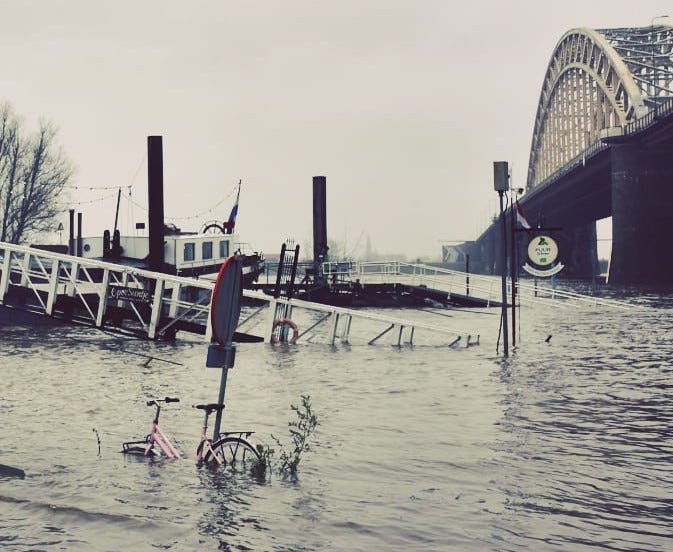The flood of 1953
It wasn't until well into the second half of the twentieth century that the Netherlands finally managed to tame the angry seas. It only took a millennium or thereabouts.
In my recent post on Amsterdam’s new underground bike garage, I alluded to the Dutch preoccupation with physical infrastructure and how it perhaps reflects the fact that for centuries the country has with great effort grappled, not always successfully, with keeping river and sea at bay. As it turns out, this week marked the 70th anniversary of the last big natural disaster, the flood of 1953, which inundated vast swathes of land in the southern coastal provinces of South Holland and Zeeland. The Dutch Meteorological Institute (KNMI) and another weather site, Weeronline.nl, put up pages commemorating the event and I’ve reposted a few archive photos below.
On 2 February 1953, a fierce winter storm with hurricane-force winds measuring 12 on the Beaufort scale resulted in a massive storm surge that broke the sea dikes in ninety places. 200,000 hectares (2,000 sq km) of land was flooded, destroying 4,500 buildings. The disaster resulted in 1,336 deaths, and the loss of ten of thousands of livestock. In Vlissingen the water reached 4,55 meters above normal sea level (NAP), a height that the dikes were not designed for. The storm raged for twenty hours, with the second high tide causing additional death and destruction.


According to the KNMI, decades before the disaster a hydraulic engineer, Johan van Veen, had warned that the dikes were not high and strong enough, but his warnings went unheeded, partly due to World War II.
In the subsequent years, a series of flood defenses, known as the Deltawerken (Delta Works), were constructed in the southern provinces, consisting of an intricate network of storm surge barriers, locks, and dams.


There is a roadway along the surge barriers, and a bike path (of course); I’ve biked along the coastal route from just south of Rotterdam to Middelburg that passes across these impressive structures (it was a long slog, don’t try this with a strong headwind).
It said that the Deltawerken were largely funded by state revenues generated by the huge gas reserves discovered in the early sixties in the northern province of Groningen. (One estimate of the total costs: nearly five billion euros.) That would seem a wise allocation of such revenues. The government of the time also devoted a significant part of those revenues to building up the social welfare state, on social services in particular. That might also have been a good idea at the time, although I appreciate there may also be valid criticisms of those policies. What the government did not do was channel the revenues into a sovereign wealth fund, the way such other countries with fossil fuel bonanzas, such as Norway, have done, a sovereign wealth fund that might, for example, have been used to properly compensate property owners in Groningen whose buildings have been damaged, sometimes severely, by the earthquakes caused by pumping gas from the ground. A prominent geologist warned at the time the fields were discovered that this was a potential side-effect, but his warnings went unheeded. Making the some 120,000 buildings in the region subsidence- and earthquake-proof would cost an astronomical amount, money that isn’t there, so as a result those unlucky Groningers are nicked and dimed in an utterly shameful way. The topic is of particular relevance today, given the astronomical jump in energy prices. Why can’t we just open the gas taps in Groningen, some people ask. It’s complicated, is the reply (perhaps a topic for another day). In short, some things here are arranged better than others.
From time to time heavy winter rains in Germany and France result in extremely high water levels in the big rivers that transverse the Netherlands, inundating the vast flood plains and other areas unprotected by the river dikes that are normally high and dry. The photo at the top of the page I took at one such moment a few years ago.
Sources
“The flood of 1953”, Rijkswaterstaat
“Watersnoodramp 1953: een terugblik op de grootste natuurramp van de 20ste eeuw”, Weeronline.nl, 31 January 2023
”Watersnoodramp 1953: de dag ervoor” KNMI, 31 January 2023





Great summary! Thanks.